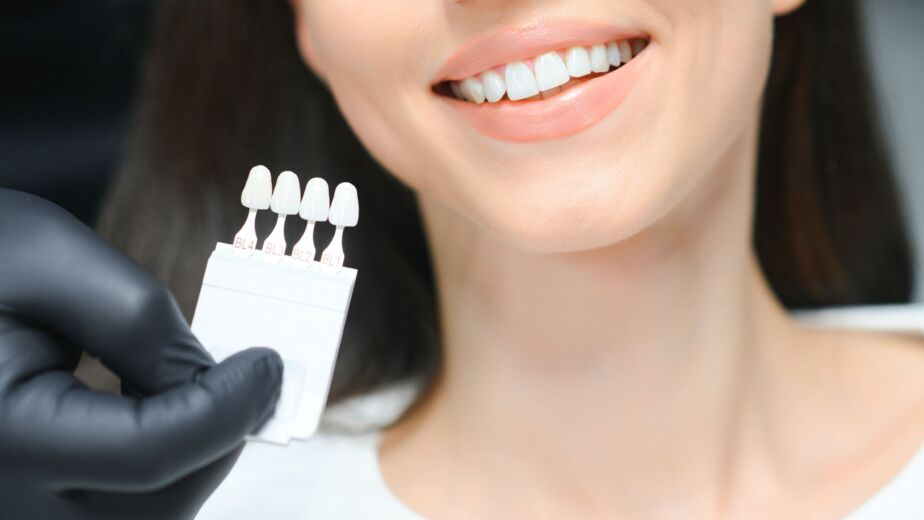To begin with, if you’ve been scrolling before-and-after photos and wondering what’s actually new in cosmetic dentistry, you’re not alone. In fact, the latest dental aesthetics trends put personalization first.
In 2025, dental aesthetics trends are less about copy-paste “Hollywood white” and more about you—your features, your lifestyle, your budget, and your long-term oral health. This guide breaks down the top innovations shaping natural, confidence-building smiles right now, plus practical tips to help you choose what fits.
What “Aesthetic” Means in Modern Dental Aesthetics Trends
Modern smile design blends three elements:
- White: the color, shape, and surface texture of teeth
- Pink: the symmetry and height of the gums
- Frame: the lips and the lower third of the face
Today’s dental aesthetics trends favor harmony over perfection. Instead of chasing identical, ultra-bright teeth, dentists are planning smiles that look believable—slightly varied incisal edges, natural translucency, and shades that suit your skin tone. The goal is character, not clones.
Trend 1: Digital Smile Design (DSD) & AI Planning
Digital Smile Design (DSD) uses photos, intraoral scans, and facial analysis to plan a smile that fits your proportions. Increasingly, AI helps map tooth shapes to facial features and predict how adjustments affect your overall look. You can preview the plan on-screen and even “test-drive” a temporary mock-up.
Why it matters
- Reduces guesswork and post-treatment tweaks
- Speeds up decision-making because you can visualize options
- Aligns expectations—what you see in the simulation is close to what you’ll get
Human tip: Bring 3–5 reference photos (friends, celebs, or your own past smile). Focus on tooth shape and length, not just shade. This makes your DSD session more productive.
If you’d like to preview your own plan, explore our Digital Smile Design at Birgul Klinik pathway and see how mock-ups work in real cases.
Trend 2: Natural-Looking Porcelain Veneers (Minimal-Prep)
Porcelain veneers remain a cornerstone of dental aesthetics trends, but the techniques have shifted. Ultra-thin ceramics and adhesive protocols allow minimal-prep or sometimes no-prep veneers, preserving more enamel. The best results avoid a flat, opaque white; instead, they mimic enamel’s texture and translucency, letting light pass through in a lifelike way.
Best for: closing gaps, disguising discoloration that resists whitening, refining shape and length, or restoring worn edges.
Longevity: often 10–15+ years with good care.
Keys to success: a nightguard if you grind, consistent hygiene, and choosing a shade that complements your complexion rather than fighting it.
Trend 3: Clear Aligners for Discreet Orthodontics
Clear aligners continue to dominate cosmetic orthodontics because they’re removable, nearly invisible, and compatible with adult schedules. Straightening first can reduce how much cosmetic work you need later—sometimes turning a veneer case into a simple bonding refresh.
Why this trend sticks
- Aligners improve bite and symmetry while protecting tooth structure
- Hygiene is easier during treatment vs. fixed braces
- Post-aligner retainers help preserve your investment long-term
Reality check: Wear time (usually 20–22 hours/day) is the make-or-break factor. If consistency is tough, talk about refined timelines or hybrid plans.
Trend 4: Laser Teeth Whitening with Shade Control
Professional whitening has become smarter. In-office laser or light-assisted systems can brighten several shades in about an hour; custom home trays maintain results in a controlled, lower-sensitivity way. The aesthetic shift in 2025 is toward shade selection—choosing a believable white that suits your eyes, skin tone, and age, rather than going as bright as possible.
Pro tips
- Use desensitizing gels before and after if you’re prone to sensitivity
- Space coffee/tea and whitening days apart to reduce rebound staining
- Expect periodic touch-ups; whitening is a marathon, not a one-time sprint
For evidence-based guidance on products and safety, see the American Dental Association whitening overview.
Trend 5: Gum Contouring & the Rise of “Pink Aesthetics”
Great smiles aren’t just about teeth. If you show lots of gum (a “gummy smile”) or your gum line is uneven, laser gum contouring can refine the frame around your teeth—one of the most underrated dental aesthetics trends because small changes to the “pink” dramatically improve the “white.”
Benefits
- Better tooth-to-gum ratio
- Improved symmetry around the front “aesthetic zone”
- Often minimal downtime and quick healing
Ask whether your case needs only soft-tissue contouring or if bone recontouring (crown lengthening) is required for long-term stability.
Trend 6: Composite Bonding for Micro-Makeovers
Think of composite bonding as Photoshop for teeth—subtle, fast, and reversible. It’s excellent for chips, “black triangles,” small gaps, or worn edges. Skilled layering and polishing can look seamless, especially after alignment.
Why people love it
- Often completed in a single visit
- Budget-friendly entry point into cosmetic dentistry
- Reversible and conservative
Maintenance: Bonding can stain sooner than porcelain and may need polishing or replacement in a few years—plan for upkeep like you would with hair color or nails.
Trend 7: Minimally Invasive, Biomimetic Dentistry
To begin with, another major shift within dental aesthetics trends is the embrace of biomimetic techniques that mirror natural tooth behavior. Specifically, clinicians choose materials and methods that act like enamel and dentin. As a result, treatment emphasizes stronger adhesive bonding, micro-preparations, and enamel preservation whenever possible. Moreover, the visual payoff is real: restorations flex, shine, and age more like the natural tooth. Ultimately, this less-is-more approach protects oral health while delivering believable, long-lasting aesthetics.
What to ask your dentist
- Can we stage treatment to preserve more enamel?
- Which areas can be bonded rather than crown-prepped?
- How will materials look and wear over time?
Trend 8: 3D Printing & Same-Day Smile Testing
3D printing isn’t just for nerds and nightguards anymore. Clinics now print mock-ups, provisional veneers, occlusal splints, and surgical guides quickly and precisely. You can try a temporary version of your new smile, live in it for a few days, and request tweaks before the final ceramics.
Why it’s a win
- Faster turnaround between design, prototype, and final
- More chances to give feedback on length and speech sounds (hello, “s” and “f”)
- Fewer surprises on delivery day
Preventive Aesthetics: A Whiter, Healthier Baseline for Today’s Trends
To begin with, a quietly powerful movement in aesthetic dentistry prioritizes treating gingivitis, erosion, and acid-reflux effects before cosmetic work. Moreover, healthy gums do more than look pinker; they frame restorations more evenly and, consequently, reduce bleeding during procedures, which improves bonding. In addition, you can prolong results by choosing enamel-safe whitening toothpaste and remineralizing creams; furthermore, small diet shifts—such as timing acidic drinks and, afterward, rinsing with water—help protect enamel. Finally, by addressing biology first and then aesthetics, treatment plans become more conservative and, therefore, longer-lasting.
Small habits, big impact
- Nightguard for clenching or grinding
- Soft-bristle brush and low-abrasive polishers
- Water after coffee/tea; wait 30 minutes to brush after acids
Sustainable & Skin-Tone-Aware Smile Design (Emerging Dental Aesthetics Trends)
Patients care how materials are sourced and how they age. Labs and clinics are moving toward eco-conscious workflows—less waste, efficient sterilization, and digital records to cut plastics. On the aesthetic side, shade conversations now include skin undertone and lip color. The most modern smiles aren’t blinding; they’re balanced.
Costs, Longevity & Maintenance Across Dental Aesthetics Trends
Prices vary by country, city, and provider, but here’s a practical way to frame options:
- Whitening: Entry-level cost, fast results. Expect periodic touch-ups; plan for sensitivity management.
- Composite bonding: Moderate cost, conservative, great for targeted fixes. Lifespan often 3–7 years before polishing or replacement.
- Porcelain veneers: Higher upfront cost, premium look and durability. With care, many last 10–15+ years.
- Clear aligners: Cost depends on complexity and duration. Retainers are an ongoing must.
- Gum contouring: Case-dependent; often a single appointment with a big visual payoff.
Longevity boosters
- Professional cleanings and exams on schedule
- Nightguard if you clench or grind (huge ROI for veneers and bonding)
- Mouth-healthy diet and low-abrasive toothpaste
- A realistic whitening shade that you can maintain
How to Choose the Right Option (Without Second-Guessing Later)
- Start with a health-first exam. Cosmetic wins don’t last if gums or bite are unhappy.
- Share your aesthetic priorities. Bring photos and describe why you like them (tooth length, rounded vs. square edges, brightness level).
- Ask for DSD or a mock-up. Seeing is believing; trying a printed prototype lets you adjust before committing.
- Think staged, not all-at-once. Alignment → bonding → selective veneers is common. Staging protects enamel and budgets.
- Plan maintenance from day one. Ask what upkeep looks like in 1, 3, and 5 years so there are no surprises.
Common Myths—Quick Debunk (Aesthetic Dentistry 2025)
“Veneers mean shaving all my teeth.”
Not anymore. Minimal-prep techniques often remove far less enamel, and sometimes none at all, depending on your case.
“Whitening ruins enamel.”
Professional protocols are designed to be safe. Sensitivity = dehydration/temporary irritation, not enamel loss, and can be managed with the right products and pacing.
“Aligners are only for teens.”
Most aligner patients today are adults. In fact, many aesthetic plans start with short-course alignment to reduce drilling later.
FAQs About Dental Aesthetics Trends
“Perfect” is personal. Some people glow with healthy gums and smart whitening; others benefit from aligners first, then micro-bonding. Start with goals (e.g., close gaps, soften sharp edges, brighten two shades) and let your dentist map the lightest-touch route to achieve them.
Bonding is conservative, quick, and budget-friendly—great for small fixes or a trial run. Porcelain is more durable, more stain-resistant, and the gold standard for major shape/color changes. Your habits matter: frequent coffee, heavy grinding, or nail biting all tip the scales in different directions. A mock-up or a single “test” veneer can help you decide.
That’s the point. The strongest dental aesthetics trends in 2025 are facially driven and natural. Expect your dentist to discuss tooth proportion, gum heights, and how the incisal edge follows your lower lip when you talk or laugh. When done well, friends may notice you look “rested” or “fresh,” not “different.”
Follow a maintenance plan: professional cleanings, a nightguard if recommended, daily floss or water flosser, and a gentle whitening routine. Rinse with water after dark drinks, and wait 30 minutes before brushing after acidic foods. Tiny habits guard big investments.



